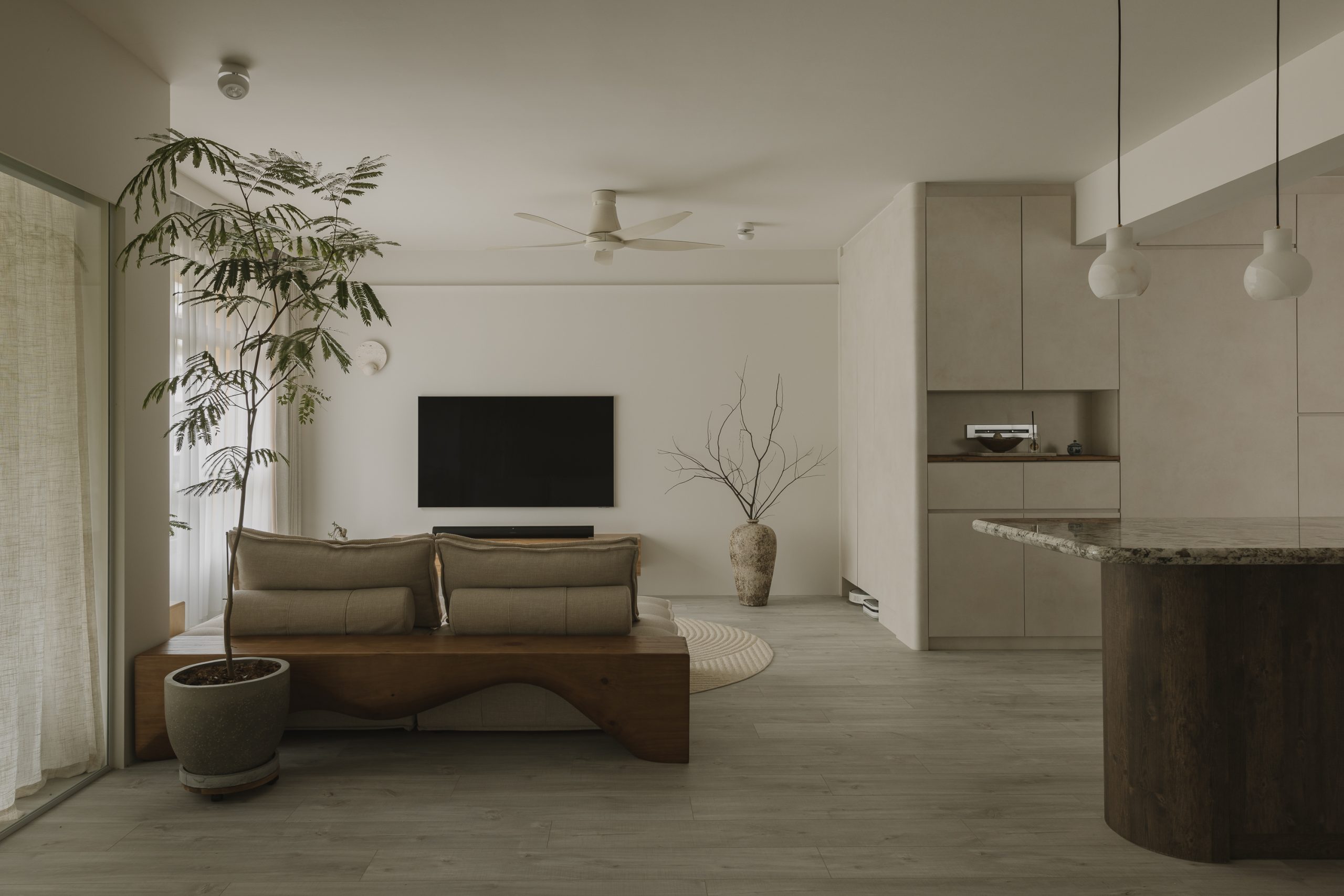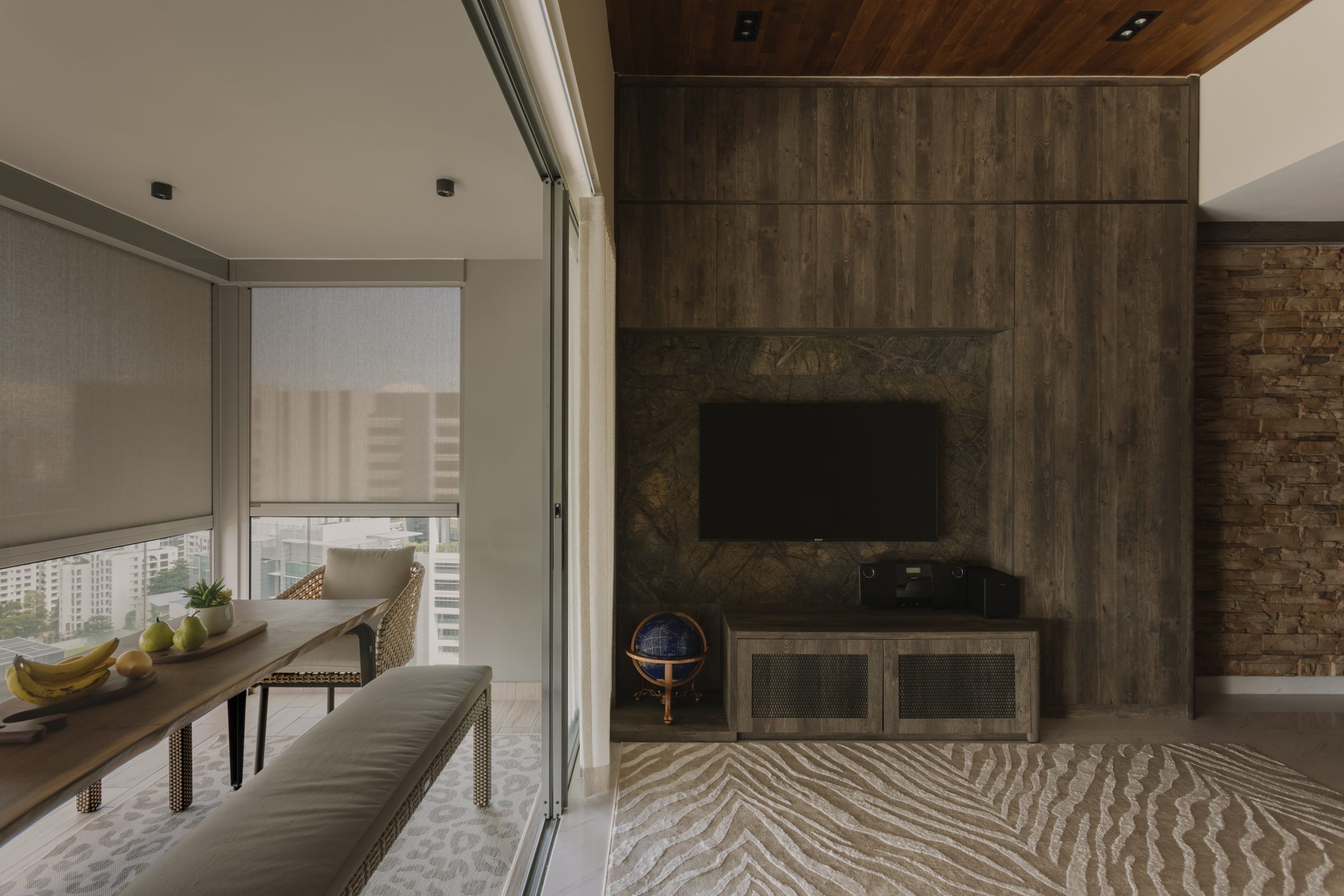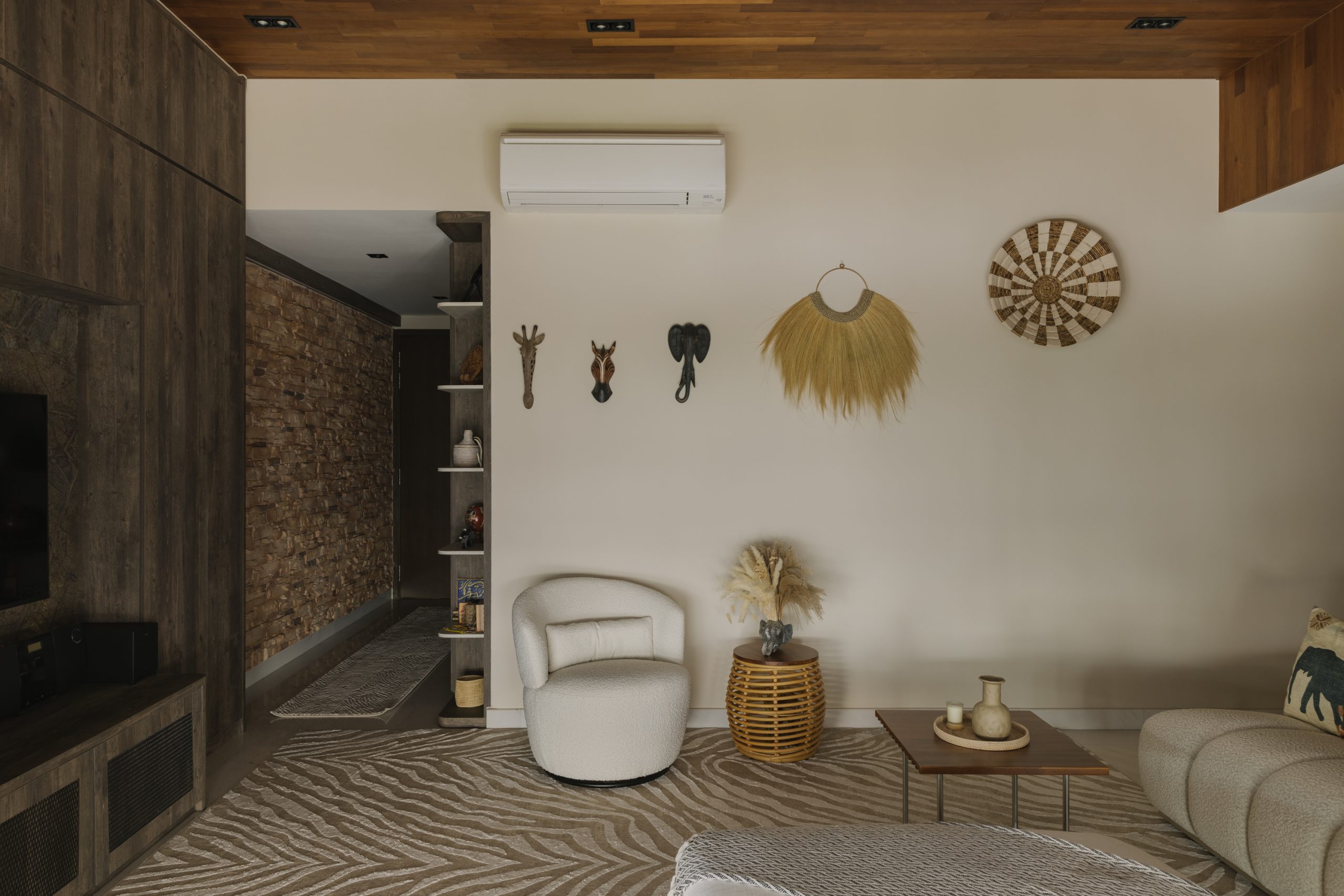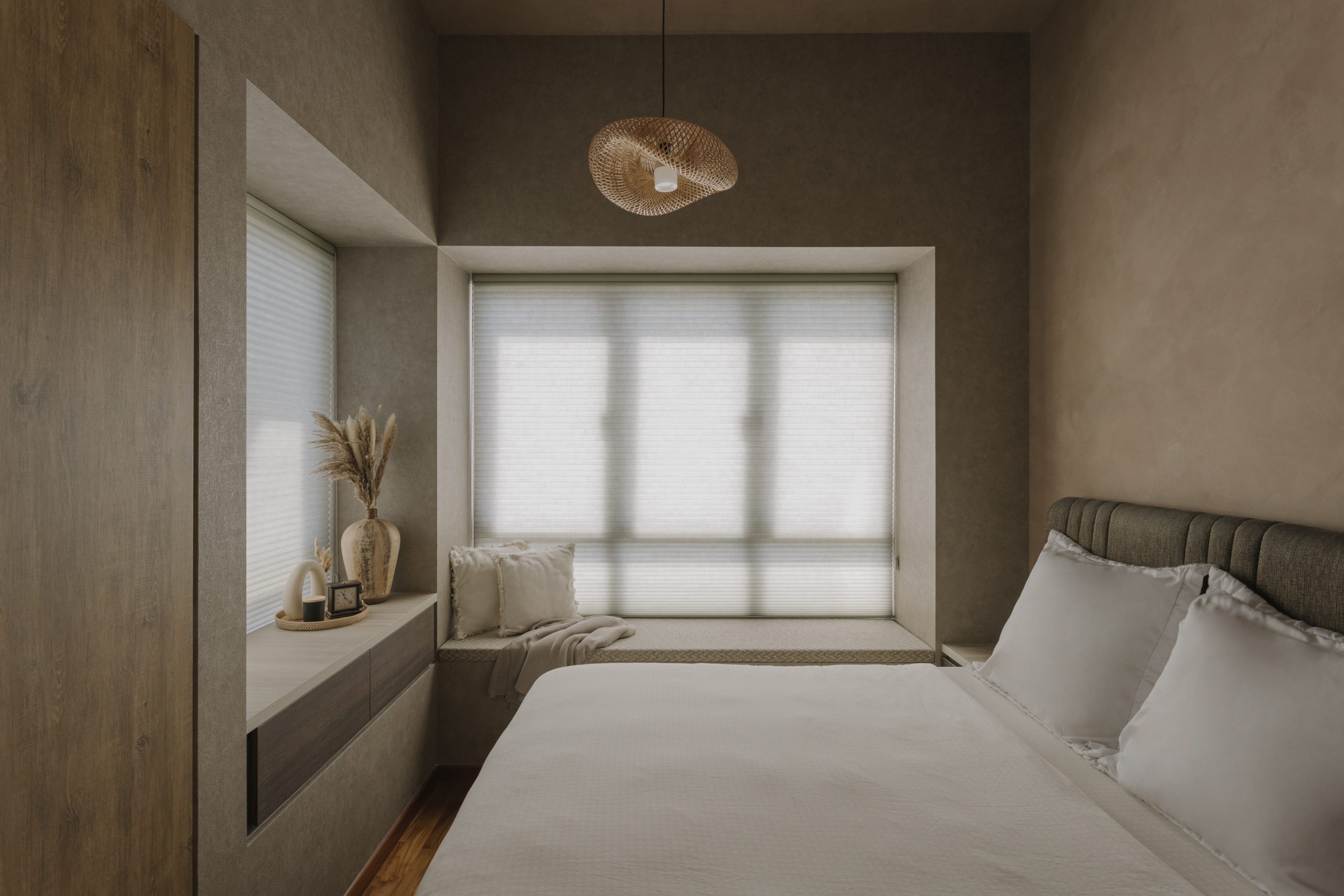Conscious Minimalism: Could Less Be More?

Contrary to popular belief, Minimalist interior design is not about living with as little as possible. With its emphasis on simplicity, functionality and open spaces — minimalism offers a breath of fresh air amidst the overwhelming sensory stimulation of modern life. Though often imagined as an uncluttered room with a monochromatic colour palette and a few pieces of furniture, minimalism encompasses much more than that, especially when you consider how different cultures honour the ethos in their spaces.
In this article, we delve into the essence of this intentional and pared-down style, including the transformative impact it can have in our daily life and overall well being.
Embracing Imperfection With Organic Elements
Wabi-Sabi, a Japanese philosophy rooted in finding beauty in imperfection and embracing the transient nature of life has made its’ way in the local interior design landscape. As seen in this serene and cosy home interior, natural materials like wood, stone, and leather further contribute to the designs’ authenticity.
With colour taking a backseat, the use of texture is accentuated. Coupled with unique pendant lighting with a warm lustre, it adds depth and dimension to the space.

Bringing the essence of Wabi-Sabi into the heart of the home, a beautifully harmonious blend of earthy wood tones and light hues creates a calm and soothing setting. Consider having open shelves to display a curated line of decorative items to elevate the minimal nature of the home. A notable feature of this home is the kitchen island that also doubles up as an invisible stove countertop. This not only creates a seamless kitchen flow, but also maximises the space usage — a brilliant combination of functionality and aesthetic appeal.
Explore the full home tour of this artistic smart home here.

Zen Philosophy
This Japandi interior design emphasises on the beauty of simplicity and conscious living by allocating each space for a specific purpose, eliminating any form of external distractions. With just the bare essentials, this home truly reflects a Zen state of mind. Additionally, having a dedicated space for meditation makes it easier to establish a regular routine.
This design philosophy can be seen from the communal area to the master bedroom, promoting an environment that nurtures both physical and mental well-being. For avid fans of Japanese interior design, introducing traditional shoji screens and sliding doors are iconic elements of this design style.

Having similar colours for the wardrobe and flooring creates a unified appearance, keeping the space looking clean and seamless. Choose functional storage solutions to tuck away belongings and maintain an uncluttered space. Tatami mats, made from woven rush grass, are a traditional flooring option in Japanese design. They offer a tactile experience and contribute to the natural ambiance of the space.
Uncover more Zen-like spaces in the full home tour here.

Go Monochrome For A Timeless Look
Monochromatic colour schemes exude a timeless and sophisticated elegance. When in doubt, you can never go wrong with a classic palette of grey, black and white. Jazz up your interior space with artsy decorative items to add some character and personality. Not only does it look easy on the eyes, but also scores high points in practicality.

By using a single colour or similar hues, monochromatic design fosters visual harmony. Keep bedding simple and elegant with crisp white sheets, duvet covers and pillowcases to enhance the overall calming atmosphere. With a ‘less is more’ approach, the bright and airy aura of this Modern Minimalist bedroom interior oozes utter bliss.

A Celebration of Culture and Simplicity
This African Minimalist interior design seamlessly marries minimalism with the rich cultural heritage and natural beauty of the African continent. Resulting in a unique and harmonious style that resonates with both tradition and contemporary touches. It embraces the raw beauty of natural materials, reflecting a deep connection to the land.
By combining earthy tones and rich textures, you can transform your living spaces into a tranquil sanctuary that pay homage to the continent’s timeless charm. Whether you’re drawn to the intricate patterns of textiles or the warmth of handcrafted pieces, the beauty of African Minimalist interior design lies in its ability to seamlessly integrate the past and the present, the natural and the crafted.

Traditional African decor pieces such as animal motifs, woven textiles, and tribal sculptures blend flawlessly in the communal space — adding visual interest and showcases cultural significance.

The colour palette draws inspiration from the African landscape with rich browns, warm terracottas and muted neutrals. These hues evoke a sense of grounding and comfort. Soft, warm lighting of this master bedroom create an inviting ambience reminiscent of African sunsets and campfires, enhancing a tranquil atmosphere.

The Transformative Power of Minimalism
The art of conscious living goes hand in hand with minimalism. The absence of visual chaos promotes relaxation, reduces stress, and fosters a sense of tranquility. A crucial takeaway from here is that minimalism isn’t restricted to a specific style; it seamlessly blends with various design styles. Whether your preference leans toward Industrial, Scandinavian, Contemporary etc, minimalism can be tailored to suit your own unique taste.
As the saying goes, “In simplicity, there is beauty.” Minimalist interior design encapsulates this sentiment, reminding us that the true essence of a space lies not in its extravagance, but in its ability to evoke harmony and peace.
CONSULT OUR DESIGNER
-
17 March 2025 DESIGN INSPIRATIONHOME TOURTIPS & GUIDES
Dreamy Bathroom Ideas To Design Your Personal Oasis
-
12 March 2025 DESIGN INSPIRATIONTIPS & GUIDES
Executive Maisonette Makeover: 5 Design Ideas to Elevate Your Home
-
14 February 2025 DESIGN INSPIRATION
5 Ceiling Design Ideas for a Visually Striking Home Interior
-
11 February 2025 HOME TOUR
Top Kitchen Materials for Interior Design in Singapore: A Renovation Guide
-
11 February 2025 HOME TOUR
Top 4 Flooring Options for Modern Luxury Interior Design in Singapore
-
11 February 2025 HOME TOUR
4 Chic Interior Design Ideas for 3-Room HDB Flats in Singapore






 BACK TO BLOG
BACK TO BLOG